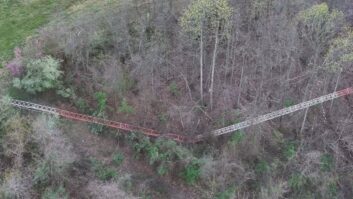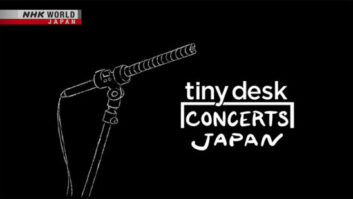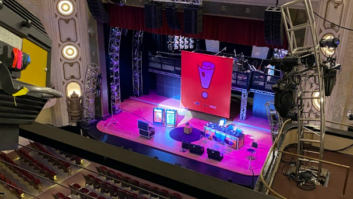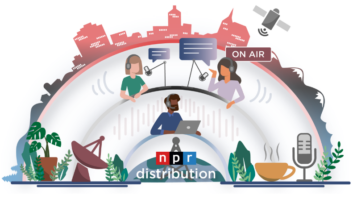Network’s Culver City Production Facility Slated for September Completion
CULVER CITY National Public Radio’s long-planned westward expansion now has a road map. NPR recently closed on its $8 million purchase of land and a two-building facility in Culver City for its West Coast Production Center.
If completed as expected in September, the facility will be NPR’s first large-scale production center outside Washington.
After an extensive two-year search, NPR purchased a 25,000-square-foot complex from the Welk Group Inc., which holds the family interests of the late entertainer Lawrence Welk.
The West Coast Production Center project has a budget of $12 million. Foundation contributions have brought in $6 million; the rest will be paid for with tax-exempt bonds and a commercial loan.
Soft real estate market
Virginia-based T.G.S. Inc. will provide system design services and Studio Bauton of Los Angeles will design the architectural and acoustical renovations of the building.
NPR Senior Engineer Jan Andrews presented plans for the facility at the 2002 Public Radio Engineering Conference in Las Vegas in April.
Recent softening of the area real estate market made purchasing this particular property an attractive option, said Andrews.
The building most recently housed an Internet video production and teleconferencing company, so many support systems and technical improvements are already in place. “The first time I walked into the building, I knew I wanted it, since somebody else had done all the hard work,” said NPR Director of Facilities Maury Schlesinger.
Two multiperson studios with adjacent control rooms, two smaller two-person studios, and three “chat rooms” that can easily be converted into editing rooms had been constructed by the prior tenant.
Existing technical infrastructure includes a 100 kVA UPS system, robust HVAC, an existing and expandable rack room and rooftop satellite dishes. The infrastructure will make the task of converting the building into a radio production facility much easier than starting from scratch, Schlesinger said.
The architectural plan calls for some acoustical improvements of the existing rooms, such as raised floating floors in the two larger studios and isolation cuts in the slab around the smaller rooms, but the overall layout of the building will not need substantial changes.
The “icing on the cake,” as Jan Andrews characterizes it, is a 40-by-40-foot TV studio with associated control room that someday could be used for a large recording studio or video production, and an adjacent 15,000-square foot building with a sitting tenant that NPR also acquired as a part of the deal.
This ensures that the facility will have sufficient space for future expansion.
As digital as possible
Andrews said the philosophy of the technical design for the new production center is “as digital and as versatile as possible. Most interconnection in the plant will be data, not audio.”
To facilitate this, the audio infrastructure will be based on a Klotz Vadis II audio network, with a variety of control surfaces tailored to the needs of each control room.
Production will be done using a combination of Dalet editing workstations and high-end DAWs, as at NPR’s Washington headquarters. Approximately 55 Dalet workstations will be installed, along with five local fiber channel-networked servers.
DS3-level connectivity to Washington will provide near-real-time networking of the Dalet system and other computer applications as well as allowing the interconnection of the telephone system and real-time digital audio transfers.
NPR recently purchased 25 Neumann U 87 Ai/Set Z large-diaphragm condenser microphones for the Los Angeles facility. Most of the microphones are destined for spoken-word applications.
The new facility is a key part of the West Coast Initiative, an effort to strengthen NPR’s core news programming and to counter a perceived East Coast and Eurocentric bias through greater coverage of the western United States and the Pacific Rim.
NPR decided to establish the new production center in Southern California to take advantage of the extensive media resources available there.
Ken Stern, NPR’s executive vice president, views the West Coast Production Center as an important resource to achieve NPR’s “long-standing goal to cover more of the country.” Once the facility is complete, he said an aggressive staffing effort is the next priority.
Los Angeles-based staff from the existing NPR bureau and “The Tavis Smiley Show,” which airs on about 21 NPR affiliates and on Sirius Satellite Radio, will be first to move in. They will be followed by staff for a planned midday newsmagazine show and additional cultural reporters and producers.
The staff will be a mix of new and existing NPR employees relocating from other locations, according to Stern. Plans call for a staff of about 50, with possible expansion to 90 staffers in the future.











